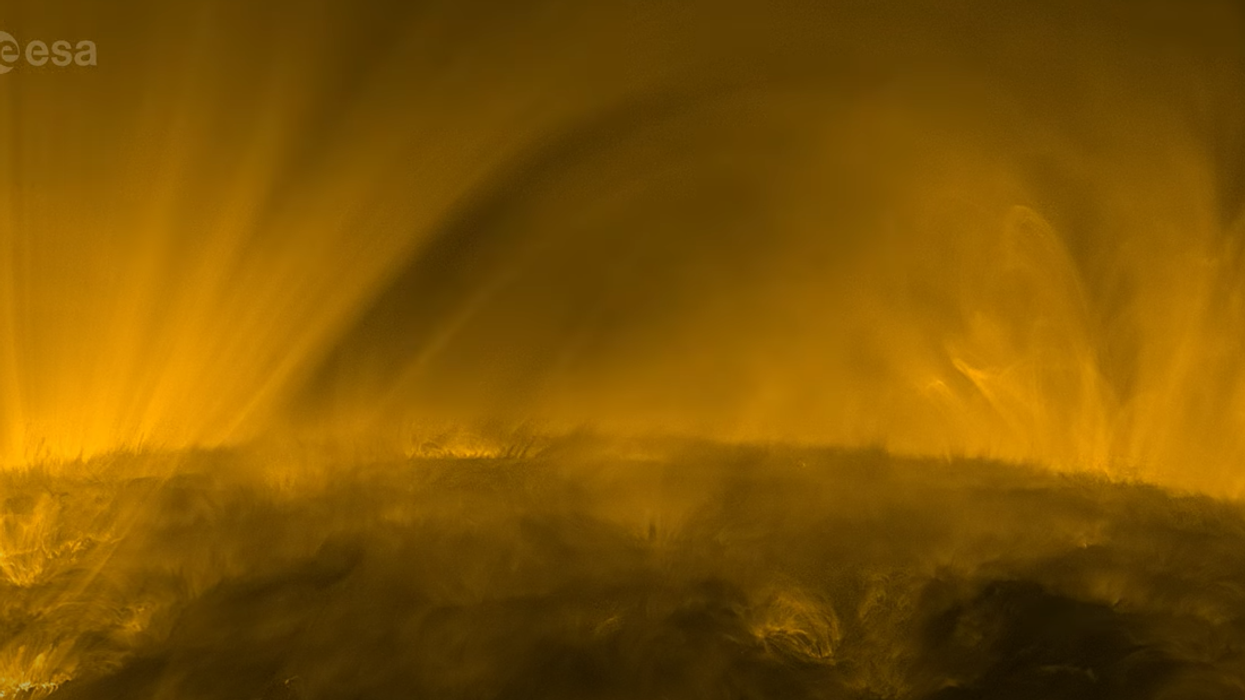Sinead Butler
May 05, 2024

YouTube/ESA & NASA/Solar Orbiter/EUI Team
Everyone wants to know what the Sun looks like up close – and now scientists have captured detailed images where it shows the Sun looking "fluffy."
In the video captured by the European Space Agency's Extreme Ultraviolet Imager (EUI) instrument on Solar Orbiter back in September 2023, there are hair-like structures made of charged gas (plasma) which magnetic field lines emerging from inside the Sun.
All in all, the duration of the clip recorded the transition from the Sun's lower atmosphere to the much hotter outer corona.
The temperature can be one million degrees Celsius approximately in the brightest region, while darker areas appear to be cooler where radiation is absorbed.
In the lower-left corner, there is a 'coronal moss' which explains the Sun's fluffy appearance as it makes delicate, lace-like patterns across the Sun.
Typically, these can be found in the centre of sunspot groups, around the base of large coronal loops and it's so hot in this area that it mostly cannot be detected.
You'll also see on the solar horizon there are spires of gas, that reach up from the Sun’s chromosphere and can reach up 10 000 km in height.
Around 22 seconds in there is a small eruption (which also happens to be bigger than Earth) in the centre where cool matter is being lifted up and then falling back down again.
Coronial rain can be seen at the 30-second mark and is made of higher-density clumps of plasma that fall back towards the Sun as a result of gravity.
This rain is around less than 10,000°C and so is visibly darker in contrast to the large coronal loops.
When the video was taken, the spacecraft was at roughly a third of the Earth’s distance from the Sun, heading for the closest approach of 43 million km on 7 October.
Meanwhile, NASA’s Parker Solar Probe was just 7.26 million km from the solar surface on the same day to measure particles and the magnetic field in the Sun’s corona and the solar wind.
Therefore, it made sense for the two missions to work together as the Solar Orbiter could remotely watch the solar wind that would pass Parker Solar Probe.
How to join the indy100's free WhatsApp channel
Sign up to our free indy100 weekly newsletter
Have your say in our news democracy. Click the upvote icon at the top of the page to help raise this article through the indy100 rankings.
Top 100
The Conversation (0)













